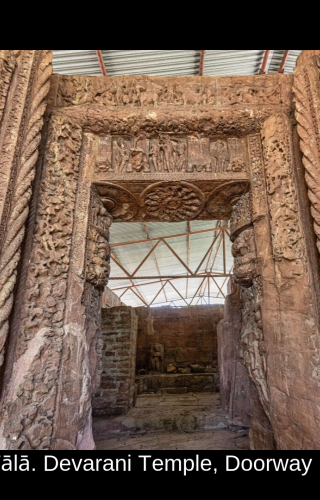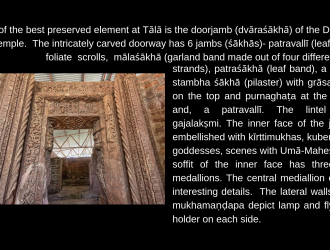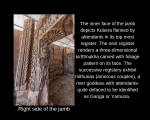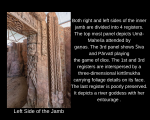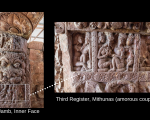One of the best preserved element at Tālā is the doorjamb (dvāraśākhā) of the Devarani temple. The intricately carved doorway has 6 jambs (śākhās)- patravallī (leaf scroll), foliate scrolls, mālaśākhā (garland band made out of four different floral strands), patraśākhā (leaf band), a circular stambha śākhā (pilaster) with grāsamukha on the top and purnaghaṭa at the bottom and, a patravallī (from inside to outside). The lintel holds gajalakṣmi. The inner face of the jamb is embellished with kīrttimukhas, kubera, river goddesses, scenes with Umā-Maheśa. The soffit of the inner face has three lotus medallions. The central medallion exhibits interesting details. The lateral walls of the mukhamaṇḍapa depict lamp and fly-whisk holder on each side. The style and nuanced ornamentation of the doorjamb indicates a move from the standard 'T-shaped' doorjambs of the Gupta period. It intricate carving on the surface certainly suggests the complexities of the later period, which could have been the result of interaction from the neighbouring regions. The time-period and regions of interaction are, however, not known. This image gallery exhibits a virtual exhibition of the doorjamb of the Devarani temple at Tālā.
This content has been created as part of a project commissioned by the Directorate of Culture and Archaeology, Government of Chhattisgarh, to document the cultural and natural heritage of the state of Chhattisgarh.
